|
The entrance to the Architecture Gallery at the V&A has a classic marble staircase. It echoes to the sound of history. On the 19th and 20th November 2014, I held a film screening and paper folding workshop here. Visitors approaching the space would have heard the following sounds and voices. Fragment 1 The sound of WW2 bombing, glass shattering and the percussive dub of the Notting Hill Carnival. This reverberation in a usually quiet location caused a few raised eyebrows and the volume had to be scaled down. Fragment 2 North Kensington residents reminiscing about good and bad days, post-war poverty, multicultural experiences, poor housing and the British sense of humour. An American who lives in London and who viewed this section of the film programme commented about the shocking poverty and how in the good U.S. we never had it so bad. Fragment 3 A filmed conversation with Joanna Sutherland, project architect at More West housing development. This is where I am based as V&A Community artist. She talked about: "What we are seeing ... is the threat to communities due to the expense of living, not just in central London, but all areas of London. I think there has been a growing interest in the last ten years, if not longer, of how communities evolve and what's important within a community, whether it's through schools, a community facility, a church. And I hope that this project, Silchester and the wider area, still remains a home for those who have lived there, had children, and maybe they can continue to live in the same place." It was heartening to hear positive comments about this film from residents of the estate currently undergoing transformation. A new community is forming at More West built on the foundations of the previous slum clearance redevelopment in the 1960s. That phase of development was very disruptive coupled as it was with the building of the adjacent Westway A40. It did however create social housing. Today, there is no longer a desire to match that social vision, and what is affordable in terms of rent and quality of life, is beyond the means of many. The Royal Borough of Kensington and Chelsea and Peabody are providing part social and market housing at More West that consists of 45 rented homes, 39 shared-ownership and 28 for outright sale. The new housing is part of a rapidly changing area. However as our local councillor states: "There are too many poor people." Councillor Judith Blakeman has to deal with many of their social problems. Fragment 4 Glockenspiel and assorted drum kits provide a positive vision of the future. Children from Frinstead House are drawing. A girl illustrates herself waving goodbye to her father from the 20th floor of the high rise; he is waiting for his train at Latimer Road tube station. Another child mischievously draws a giant t-rex attacking the tube station. This is regeneration, disaster monster movie style. Yet another child provides a rainbow arcing across the skyline. This was one of my most direct and rewarding engagements as community artist. I did not advertise this. I merely set up a large sheet of paper in the foyer of Frinstead House and invited local residents to accompany me in filling the blank. Adults and children confirmed their cultural identity and what it means to live in their high rise homes. Fragment 5 - Was not heard at the museum. It has not been caught on camera or in any of my expressionistic documentary work. I hope to render this shortly. Symbolised by a DJ playing at a recent marketing event for More West. He has bought a flat and will move to the area in 2015. He is excited. Young and professional. For him there is no lingering doubts. He is forging the future in progressive sound waves. Zeitgeist. In summary, this curated programme had the aim of dialectical montage, the juxtaposition of contrasting images and sounds. This is our experience in all its complicated social modes. It is both beautiful and ugly. We build for the future and paper over the cracks. Speaking of paper (workshop), I have also provided a visual record of how young and old came together at the V&A Museum. Complete strangers who with a little encouragement and artistic structure are able to express light and shade, twisting new shapes into being and creating another fragment (like no 4 above) that brings a smile to my face.
0 Comments
Took part in a HISTORYtalk event last night with Natalie Marr and Emily Ballard from Latymer Projects. I screened two short films called Flood Light (2010) and Home (2012). Also a selection of images culled from my archive research into the Grand Union Canal, Westway, Slum Clearance Programme and Silchester Estate development. This was a good opportunity for me to review my practice and to talk about maps created as part of my work. The first map, West London Waterways, was made in 2009 as part of a development bursary for the Cultural Olympiad. This got me noticed by the Arts Officer in RBKC and I was commissioned to stage an arts event as part of InTRANSIT 2010. Flood Light was a participatory film making project getting local residents and Londoners to connect with the inter-related legacy of the Grand Union Canal and Westway (A40). Naturally, I made a map and invited people to creatively journey across this landscape. Ten other film makers took up the challenge and produced excellent films. I was able to present this at the Portobello Film Festival alongside my own work. As a follow-up project, Home is about the last house demolished for the Westway. It's based on an evocative photograph taken by Mary Miller in the late 1960s. For several months I've been obsessively trying to find out more about this lost house and the home owner who refused to be moved as the wider area was demolished for slum clearance and Westway road building. No luck so far. I have microfiche disorder. At this juncture in time, I'm working with Latymer projects editing analogue and digital maps. We want to focus on the area around Bramley Road, Freston Road and the Silchester Estate in W10. This is an area steeped in radical history: 1958 race riot, Westway activism and Frestonia. It is also about to undergo regeneration (again) and our map will hopefully represent issues around community and housing. Check out the excellent map (below) made by Allan Tyrrell. For a full low down, visit the Latymer Mapping project website. 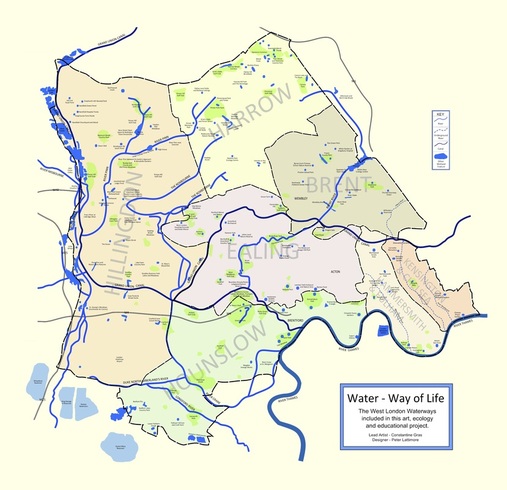 West London Waterways map, 2009. Inspiration for my eco-arts projects based around blue and green spaces in West London. 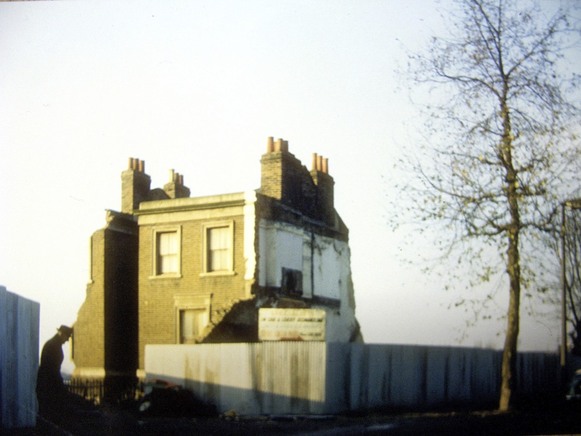 Last house demolished for the Westway, late 1960s. Photo by Mary Miller. © RBKC Local Studies and Archive. |
Categories
All
Archives
May 2024
|
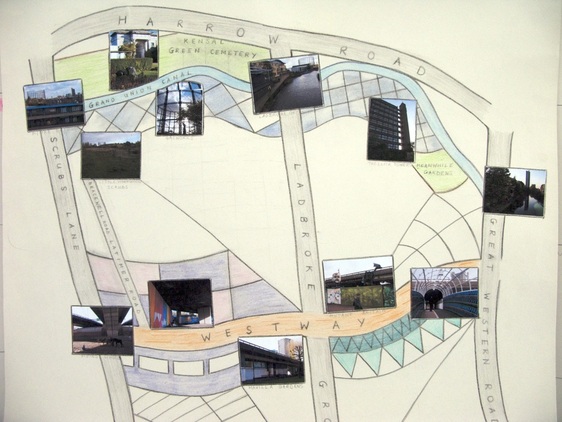

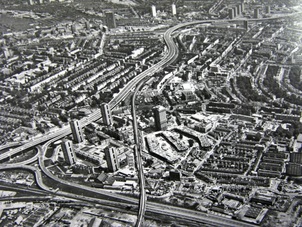
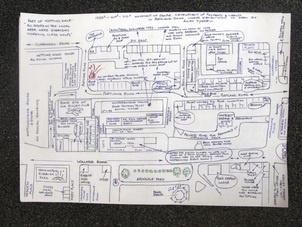
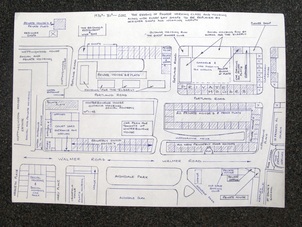
 RSS Feed
RSS Feed
